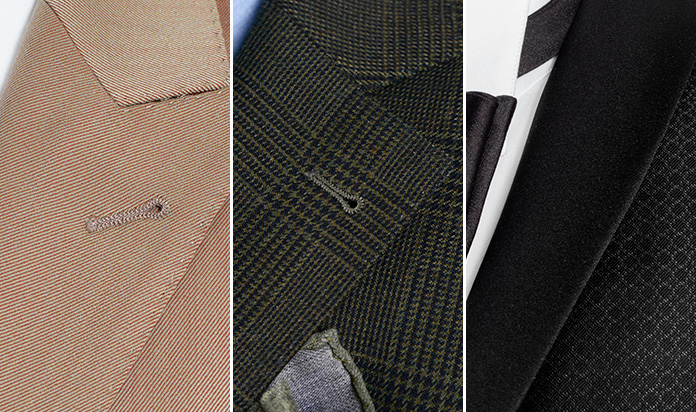There is the Milanese tradition that prefers lapel more consistent, rigid and stuffed with a cloth made of horsehair and camel hair; or the Neapolitan tradition, which uses a lighter version, with a cloth inserted inside that is of less weight in grams or even just with a little bit of cotton.
One of the main characteristics of the made to measure suit jackets, a detail really capable of infusing personality to a garment depending on its character. The term lapel indicates folded flaps of cloth on the front of a jacket or coat. Here is all you need to know about them.
Menu
History of the lapels
Historically it referred to the lapel which is usually formed by folding over the front edges of the suit jacket or coat and sewing them to the collar, an extra piece of fabric around the back of the neck, which makes the underlying lining visible. The word “lapel” was used first in the mid 17th century, a combination of lap+el (“diminutive suffix”), lap comes from the word lappe – it is an old English word læppa which means skirt or flap of a garment.
It then began to become more common and relatable with the suit lapel in the late 1860s, when the coats were no longer buttoned up but worn with the flaps open and facing outside and the lapel represented one of the only options that decorate and personalize your garment.
Today the lapels of a suit jacket (or a blazer) are really a unique feature: you can choose from different types of lapel that, depending on your choice, will enhance the style and a character of each garment suiting to the right occasion.
Types of suit lapel
Before narrating the characteristics of the main types of lapels for the jacket, another typical element of this garment needs an introduction, the cran or gorge (a small notch also is called fishmouth). In Naples, Italy cran is also known as the colloquial term “sgarzillo”, it is precisely the joint that separates the collar of the jacket from the lapel.
The gorge has a strong ‘v’ shape; the body of the lapel meets the collar on an angle that slopes downward, before the actual protruding peak of the lapel strikes sharply upwards in the aforementioned ‘v’ shape.
It goes without saying that the shape of the cran or gorge will depend directly on the chosen lapel, but normally the standard gorge has a width of less than a 90 degree angle, and is the most common for both suits tailored, bespoke as well as for ready-made.
Notched lapel (classic)
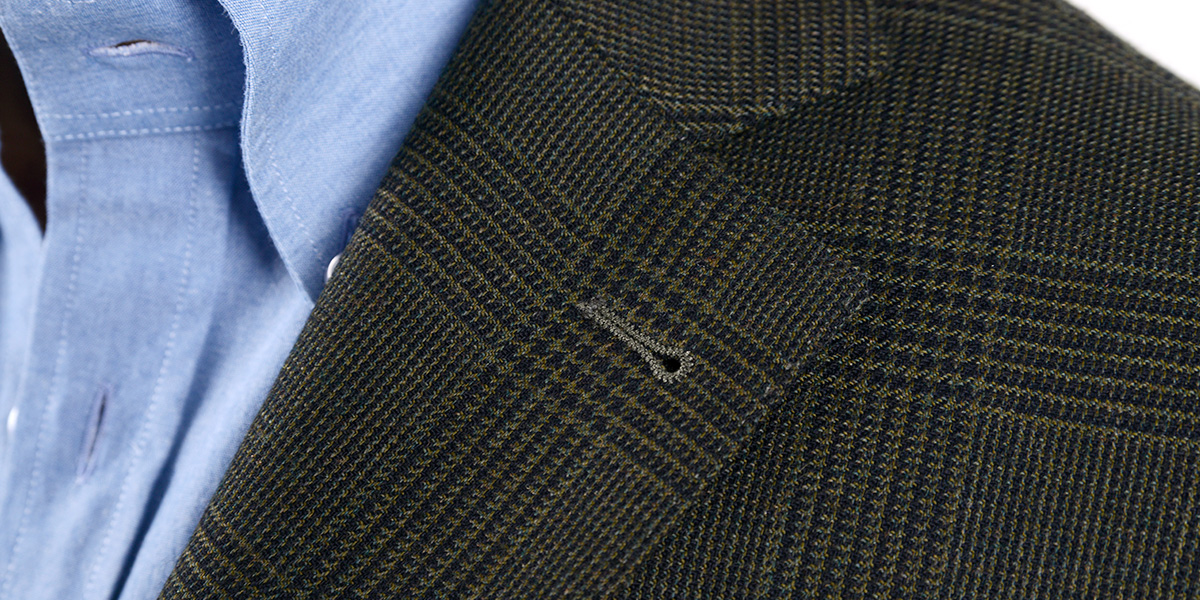
The notched lapel (sometimes called “step lapel” or “step collar”), is the most traditional and commonly used in suits. The rather large gorge or notch defines the setting of the lapel which assume an ideally right-angled shape that points sideways towards the outside of the chest.
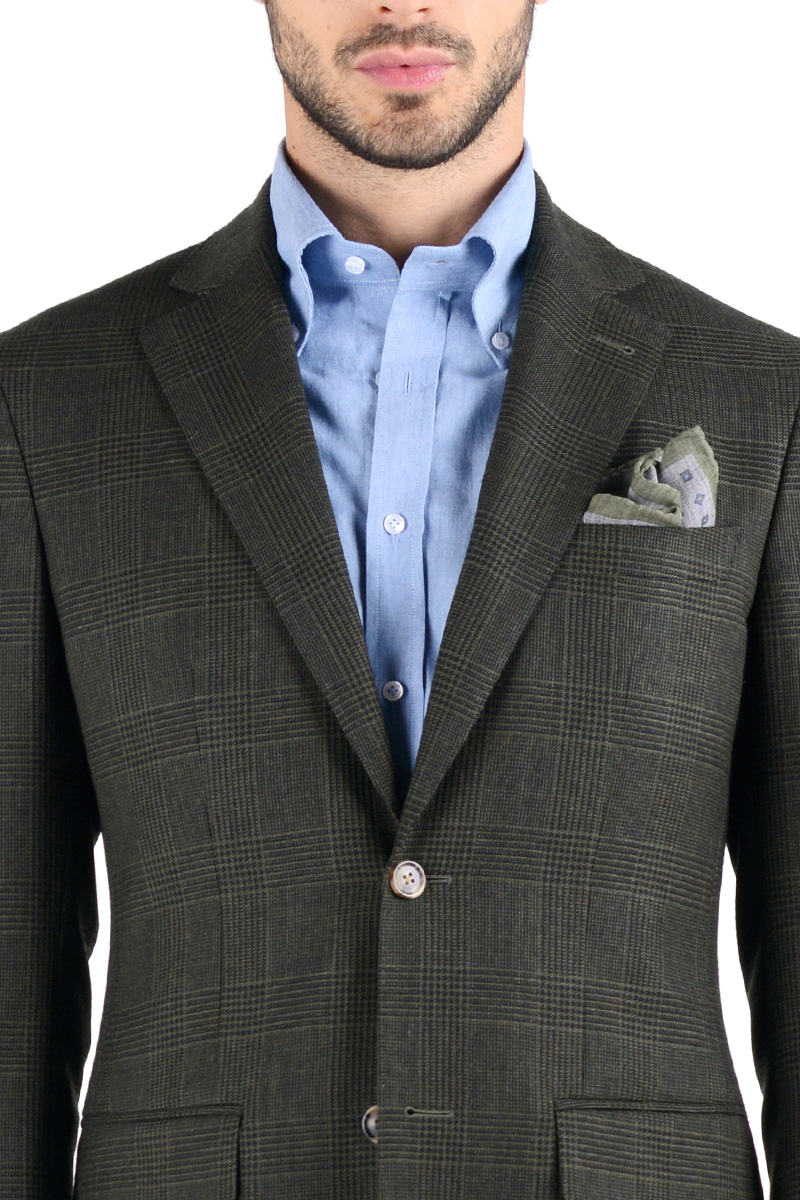
Versatile and sober, the notch lapel is used mostly for single-breasted jackets and standard business suits.
Peaked lapel (pointed)
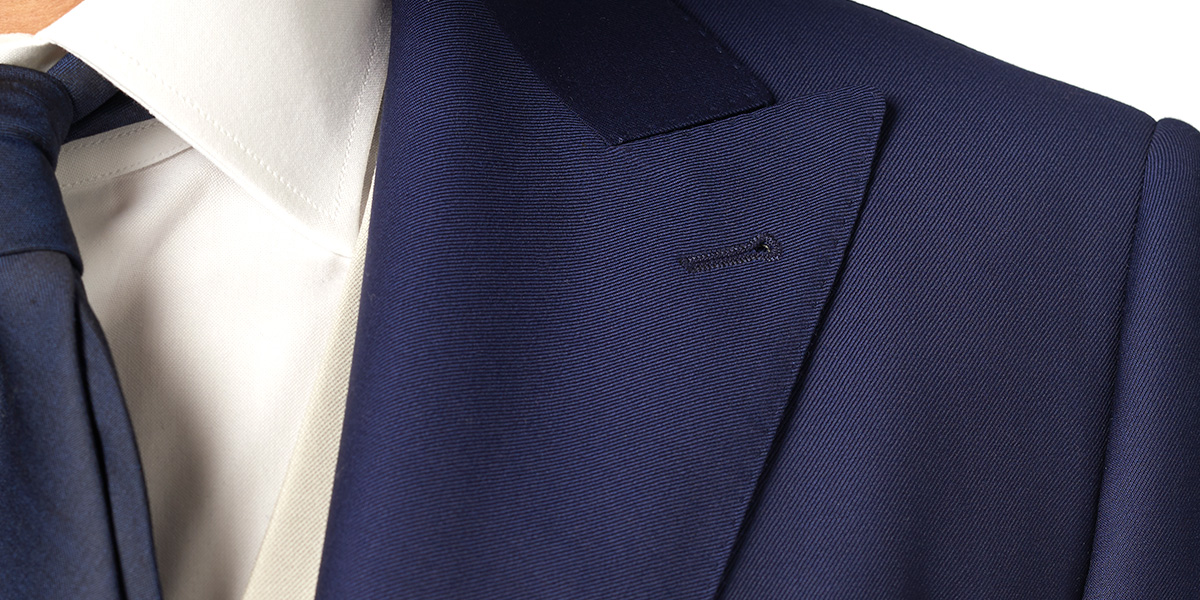
The peaked collar (sometimes called “pointed” or “peak”), is typical of the double-breasted jacket, or even more formal clothes such as the morning dress or tailcoat. Unlike the classic lapel, the pointed lapel is characterized by an almost non-existent gorge or fishmouth and by a shape whose tips are pointed towards the top, emphasizing the width of the shoulders and chest.
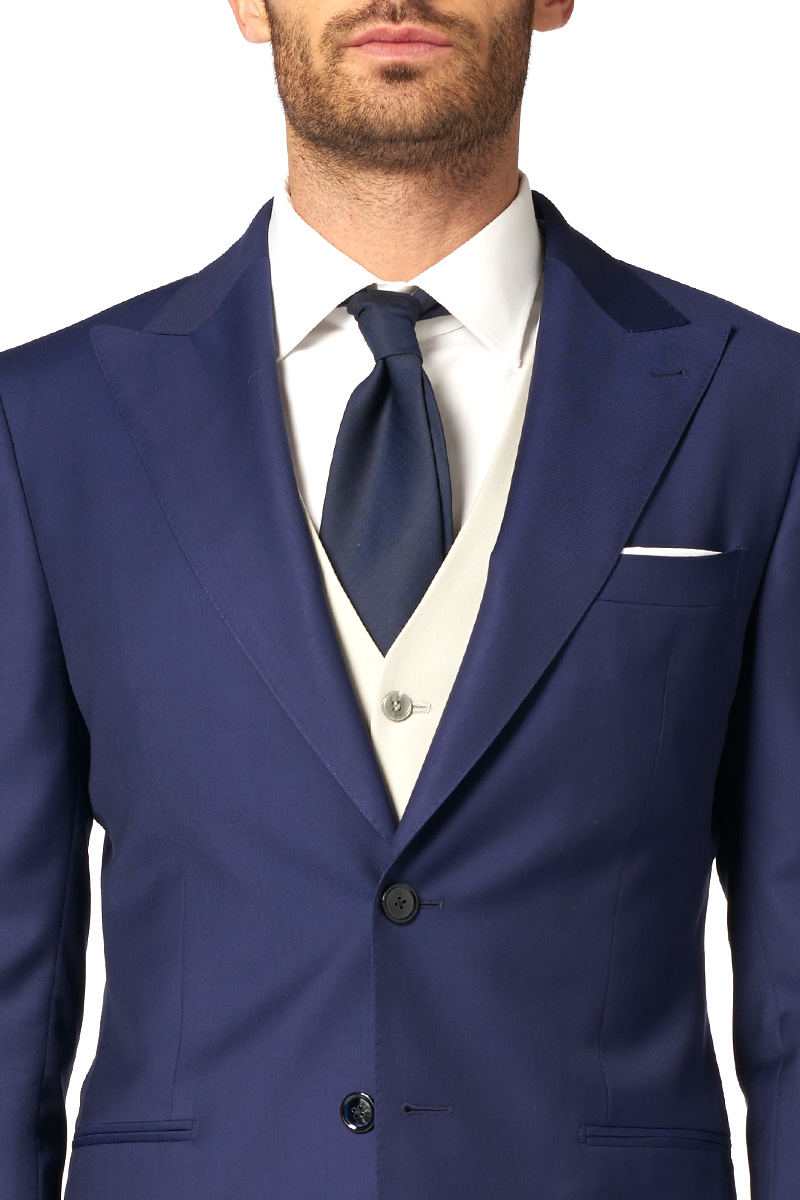
As it is easy to guess, the peaked lapel is the more formal collar, but it can also be used to make a single-breasted suit or blazer a little twist with a touch of dandy style.
Shawl lapel (roll)
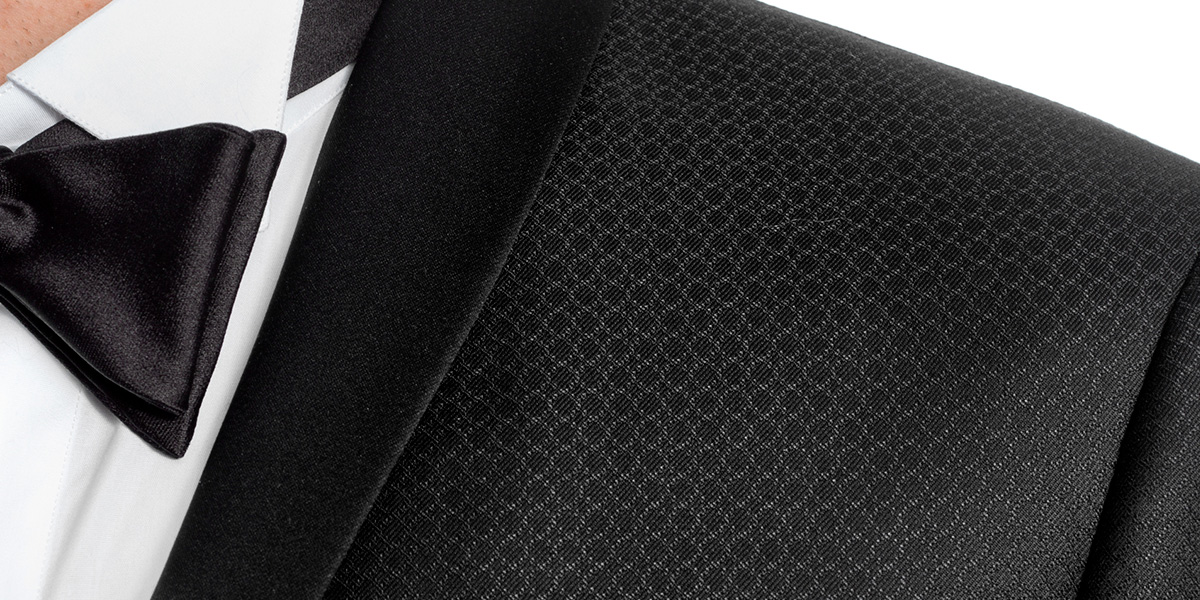
The last type is the most exclusive one. With its unmistakable appearance, the shawl lapel (also called “shawl collar” or “roll collar”) is characterized by a rounded shape and the absence of the gorge or notch. Basically, the lapel, in this case, is nothing more than a lapel that starts from the neck and ends below the chest. The lapel and collar of the jacket are therefore made up of a single element.
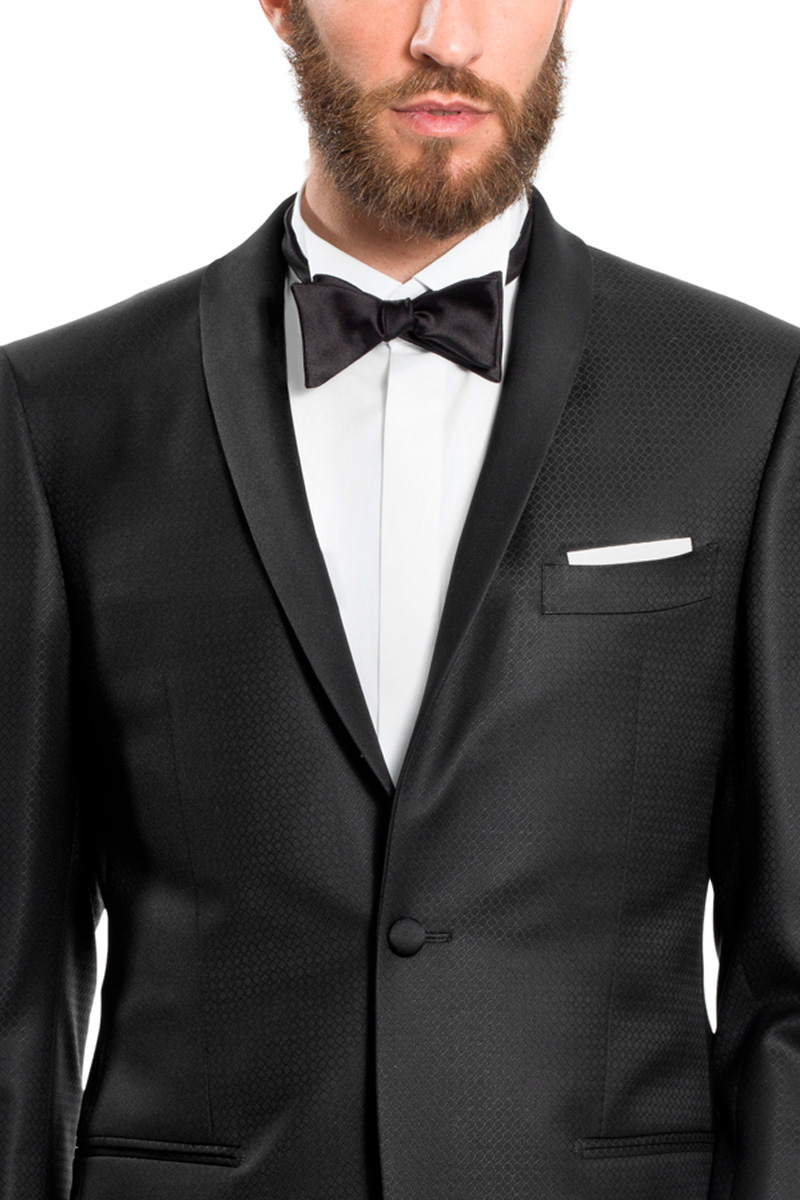
The shawl rever is the model with a more harmonious and simple look and is used almost exclusively for tuxedos and some types of robes.
Length and width
Regarding the width and length of suit lapels, there are different styles and traditions. The traditional Neapolitan tailoring has always opted for a wider lapel and therefore with a wider chest, while the Nordic tailoring is more inclined to make small lapels.
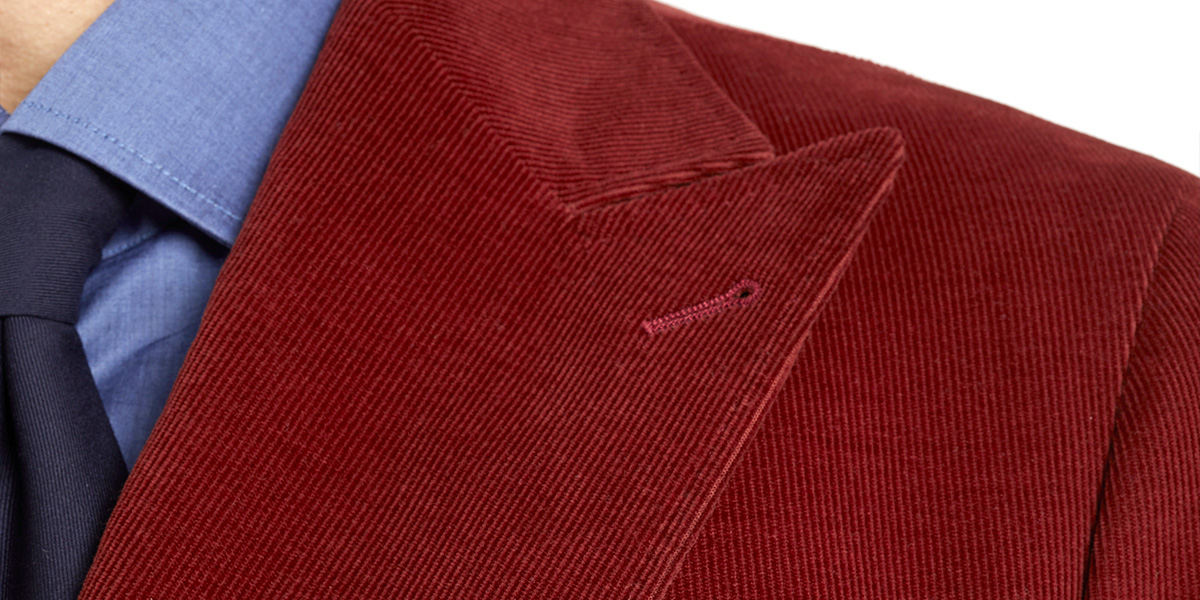
As a general rule, the dimensions of the lapel should be directly proportional to the person’s height and body size, so as to recreate harmonious proportions and to better flatten the figure.

With regard to the actual style, the small or slim lapel definitely have a more casual look compared to the generously large size. So if you prefer a more formal cut, better opt for the wide lapel.
In short, what to choose between notch, peaked or shawl suit lapel? If you are looking for an everyday suit, to wear to the office, but also in your leisure time, customise it with the classic notch lapel.
If instead, you need an indisputably elegant garment for the very formal occasions (such as an interview, a business meeting, a ceremony), opt for the peaked version.
If you are buying a tuxedo? As indicated in our tuxedo guide, go with a simple shawl lapel, made with the same fabric used for the cummerbund. It is best suited for black tie events, red carpet galas and weddings.

